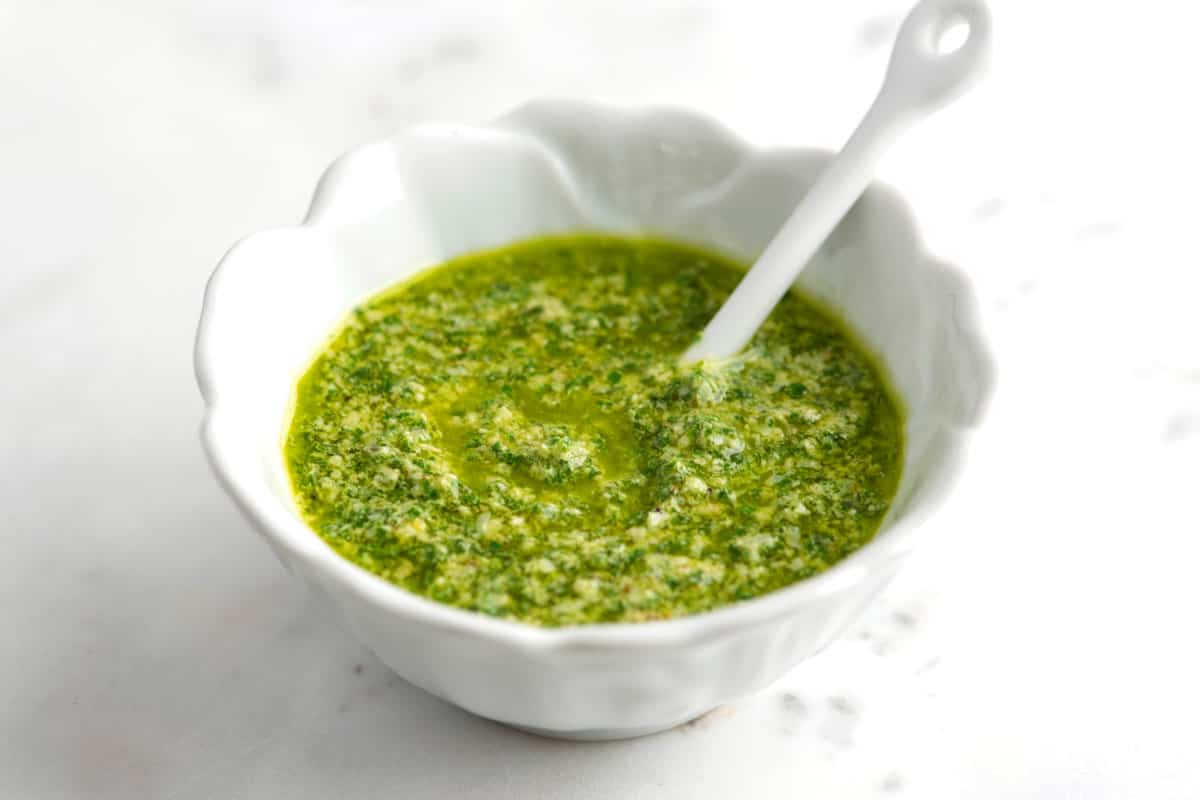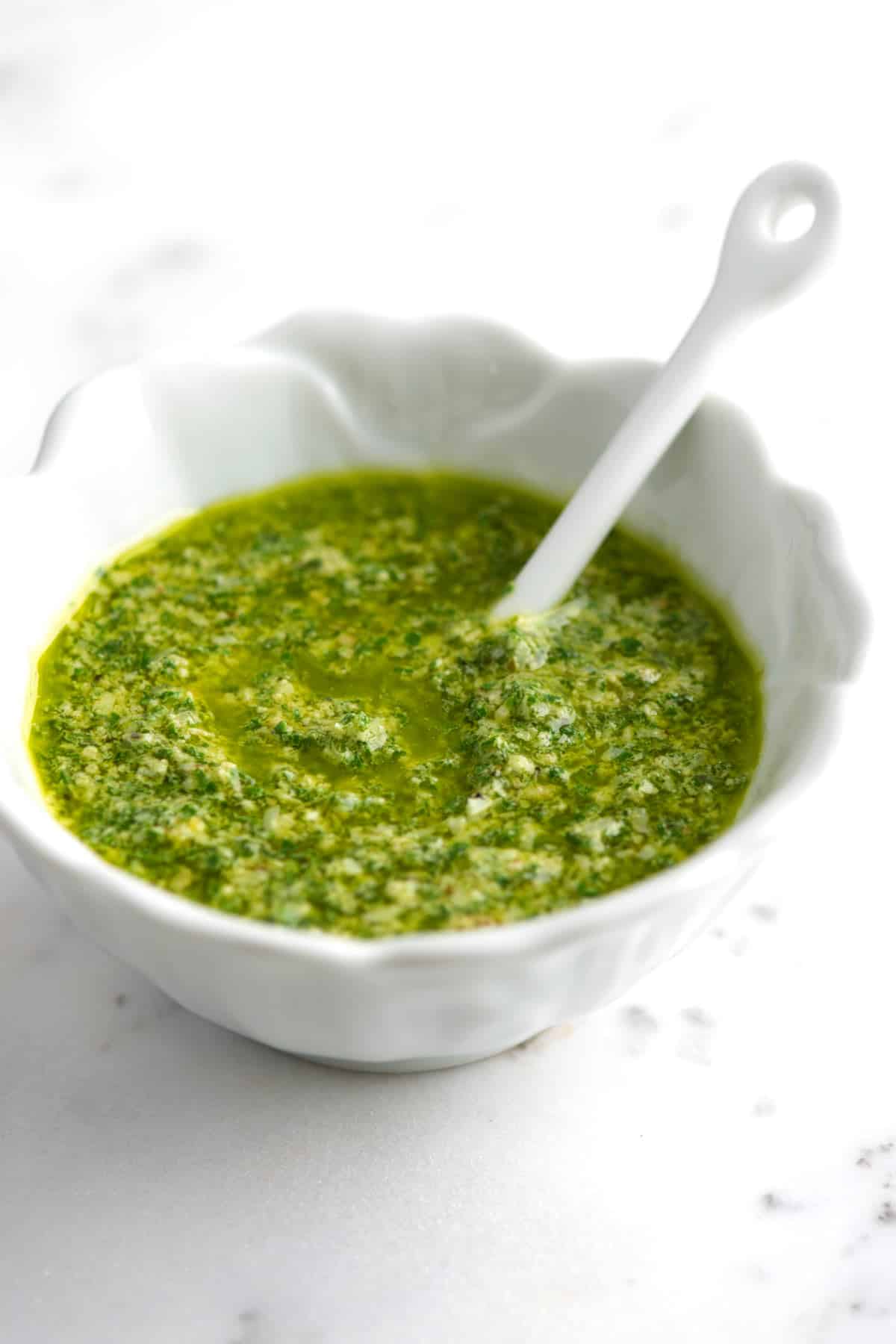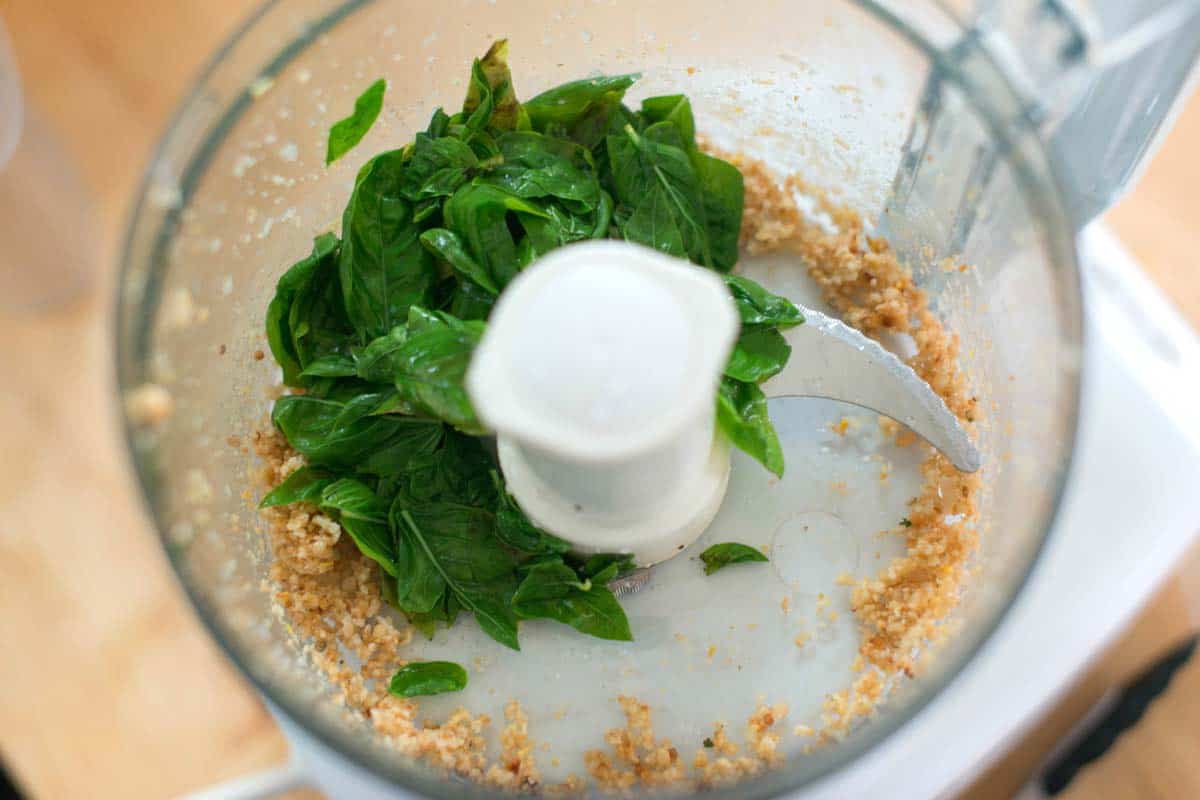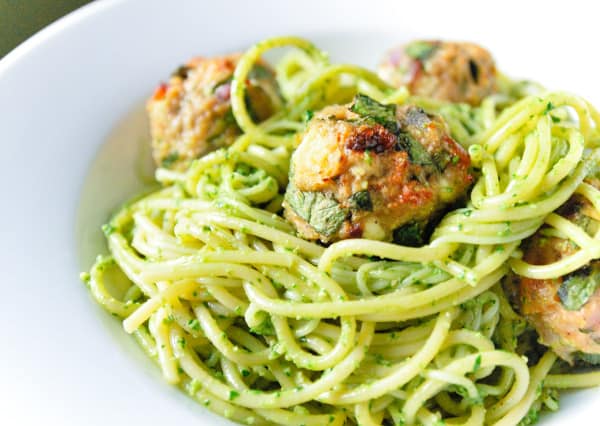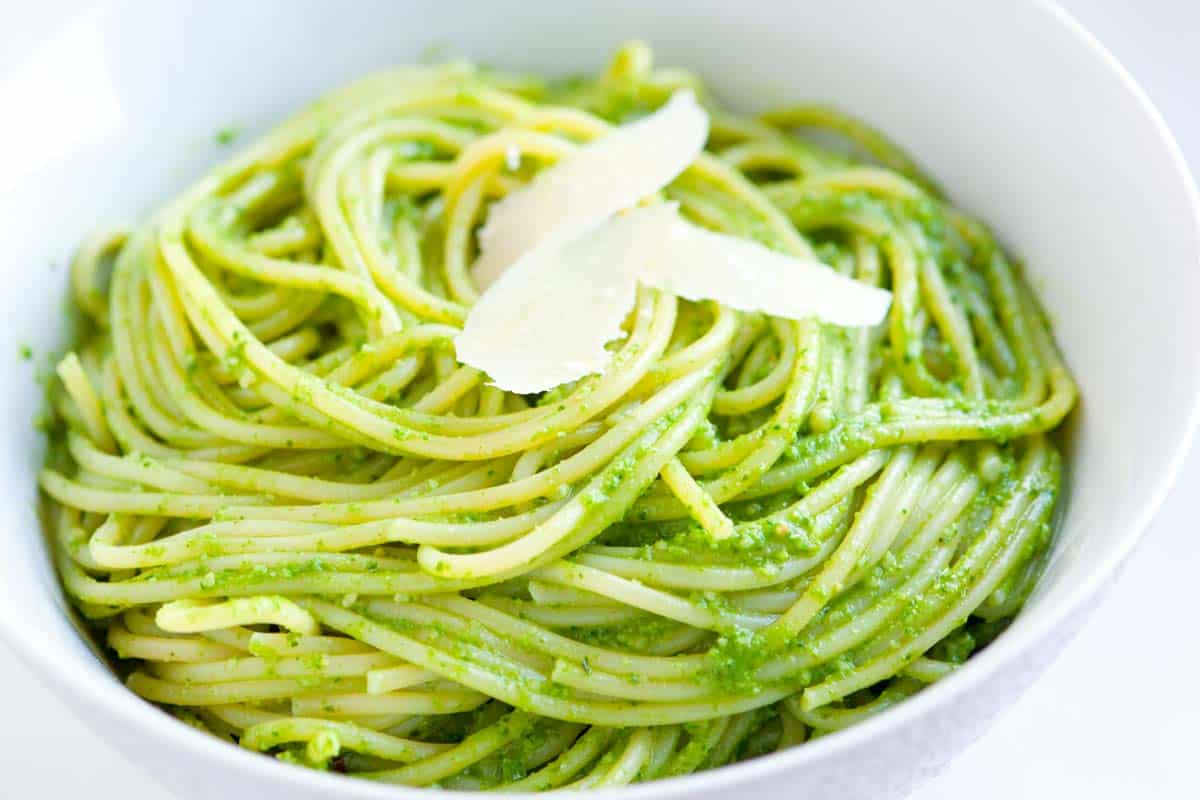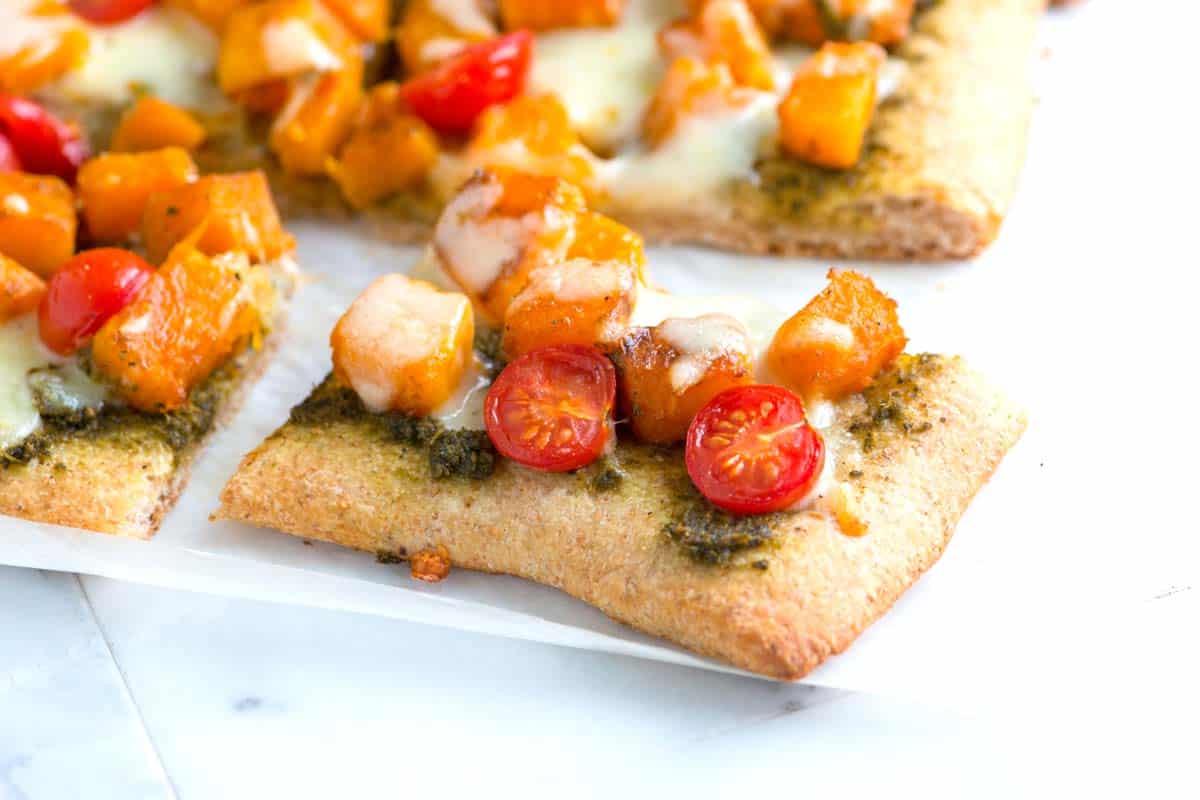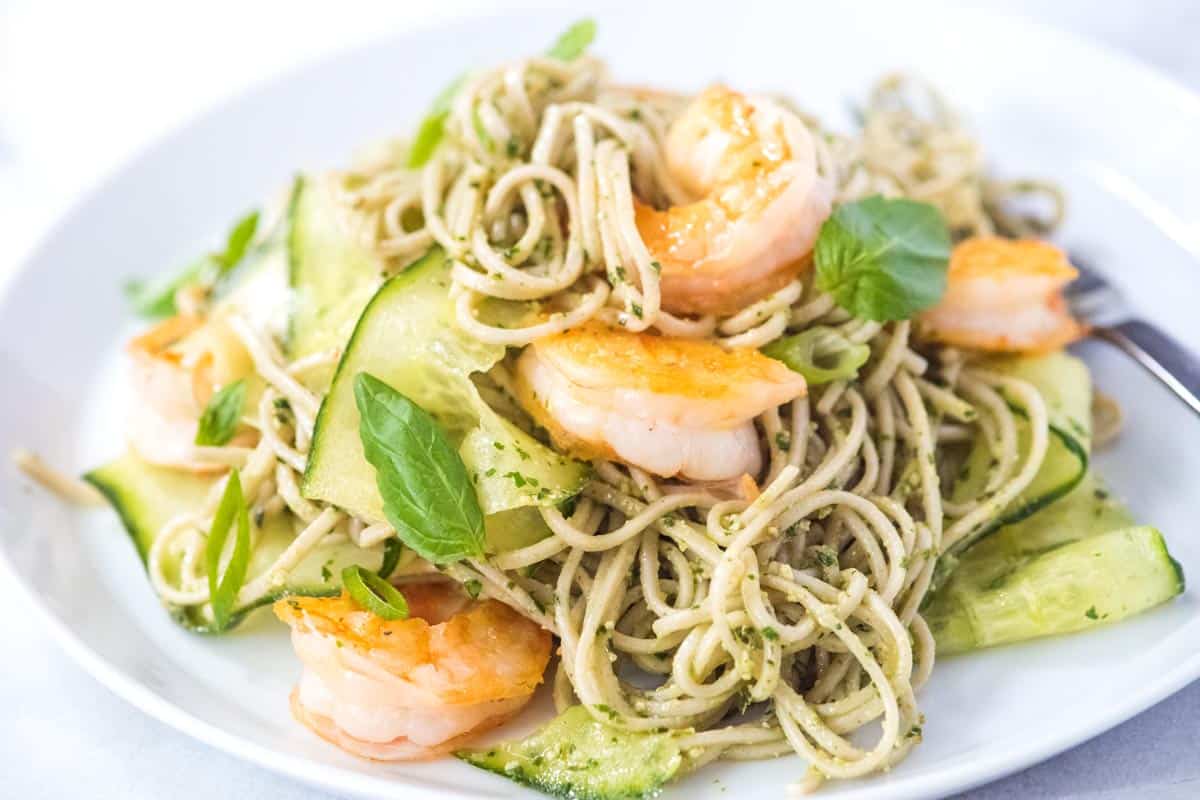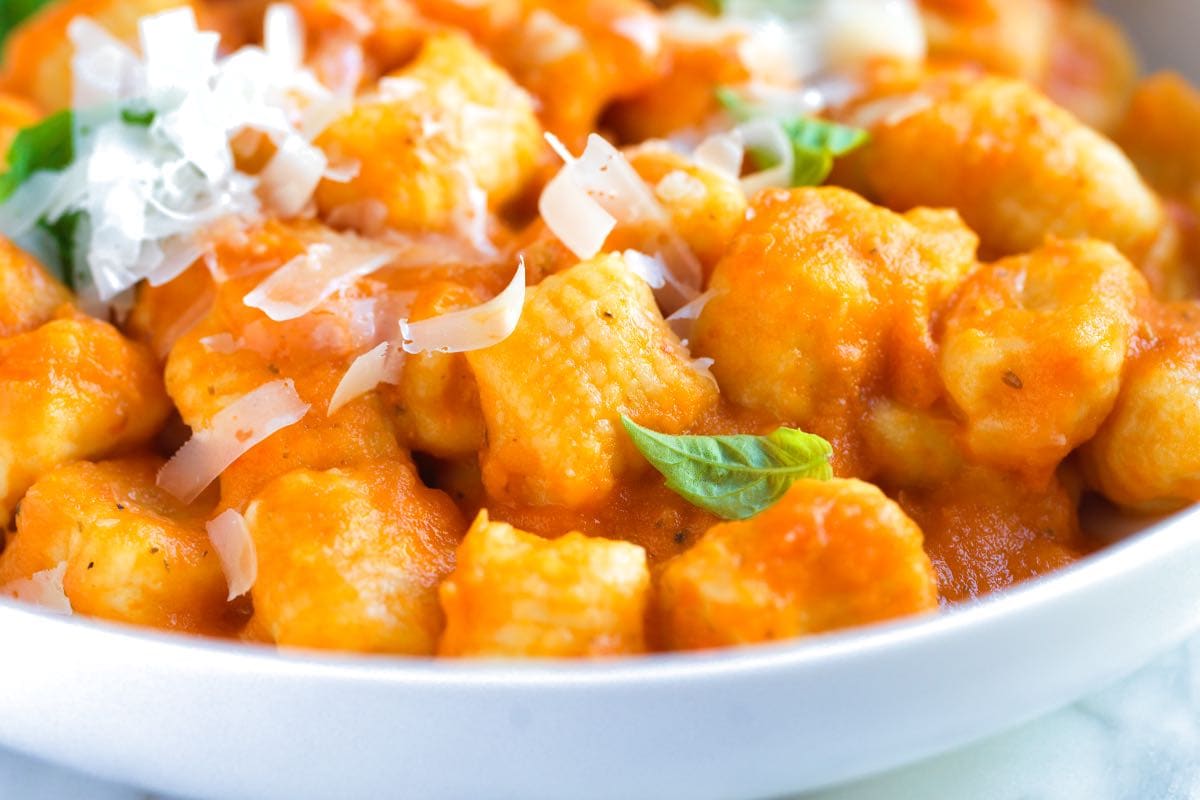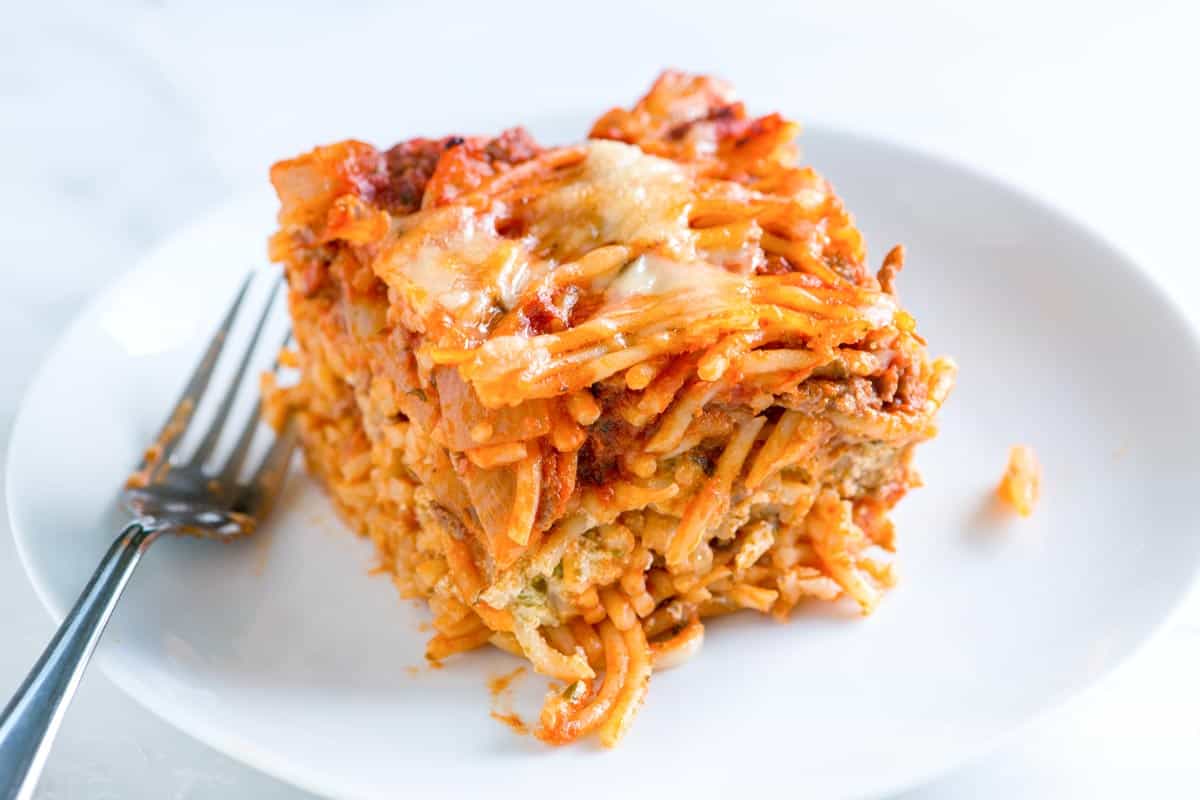Homemade pesto tastes so much better than store-bought jars. It’s also so easy to make and screams summer! With our recipe, you’ll have homemade basil pesto in minutes. We use pesto a lot in our kitchen, and I bet you will, too, once you know how to make it! It’s incredible tossed with pasta, stirred into mashed potatoes, tossed with roasted veggies, and spread onto bread for sandwiches.
Key Ingredients
Basil: For the best basil pesto, I recommend using fresh basil. The leaves should be bright green and fragrant. For the most authentic pesto, use Genovese basil. When prepping the basil for pesto, pull the leaves away from the stems. Then discard the stems, or save them to flavor homemade tomato sauces and tomato soup (add them as you would a bay leaf, then remove when the dish is ready to serve). If you don’t have basil, consider other greens like kale or spinach. I have a kale pesto recipe if you are interested. Garlic: You don’t need a lot of garlic to make pesto (too much, and it will overpower the basil flavor). I typically use 1 clove of garlic. Pine Nuts: These are traditional, and I love how buttery they taste, but you can substitute other nuts in pesto if you’d like. I’ve used blanched almonds, walnuts, and sunflower seeds before with success. Keep in mind that the flavor will change slightly with different nuts/seeds. You can also make pesto without nuts. The texture will be different, but the sauce still tastes fresh and delicious. Olive Oil: Choose a good-quality olive oil that you love. You’ll add a generous amount of oil to make the pesto, so make sure that you enjoy the flavor. Cheese: I love Parmigiano Reggiano or Pecorino Romano cheese for homemade pesto, and if I’m feeling feisty, I’ll combine them. To make pesto without cheese, leave it out or substitute with 2 to 3 tablespoons of nutritional yeast. Nutritional yeast is nutty and cheesy.
How to Make Basil Pesto
Traditionally, you would use a mortar and pestle to gently grind the pesto ingredients together, creating a textured sauce. If you have a mortar and pestle, try it! Otherwise, use a food processor. I start with the pine nuts and garlic and like to pulse them in my food processor until they are chopped small. Then, I add my basil leaves. I turn the processor on and drizzle in the olive oil. Watch for the sauce to come together, then stop the food processor. You want some texture in the sauce, so do your best not to make it too smooth. Then, I transfer everything to a bowl, stir in my cheese, and season with salt and pepper. Adding the cheese at the end creates a better texture for the pesto, which you can see in our photo below. Basil pesto lasts for a few days in your fridge. It might lose some of that bright green color, though. If you’re concerned, I have two tips for you: Tip 1: Blanch your basil! I know this sounds a little ridiculous, but trust me. Blanching basil makes the greenest pesto. Have you ever noticed that pesto browns over time in the fridge? Or even when you add it to hot pasta? Blanching the basil prevents this. It locks in the bright green color of the leaves. It’s also easy. Dunk the basil leaves into boiling water for 5 to 10 seconds, then submerge them in ice water. Pat the leaves dry, and use the balanced leaves to make pesto. (I’ve included instructions for this in the pesto recipe below) Tip 2: Store pesto with a layer of olive oil! Pesto browns over time due to oxidation, so adding a thin layer of olive oil to your pesto when storing it will help prevent oxidation and keep the basil fresh.
Ways to Use Homemade Pesto
We use homemade pesto in so many dishes, and I bet you do too. I toss it with shrimp soba noodles for a light, flavorful summer dish. I add a pesto layer to baked ziti with spinach and this baked spaghetti (so delicious!). It’s perfect for homemade pizza or flatbread pizzas if you are in a rush. And, of course, it’s incredible with pasta and this homemade gnocchi! 1 garlic clove 1/4 cup (36g) pine nuts or walnuts, lightly toasted 1/2 cup (120ml) olive oil, plus more for storing 1/2 cup (28g) finely grated pecorino or parmesan cheese (1 ounce) Salt and fresh ground pepper to taste 2Place the garlic clove and pine nuts in the food processor bowl. Pulse a few times until the nuts are chopped into small pieces but not completely pulverized. 3Add the basil leaves to the bowl and secure the lid tightly. 4Turn on the food processor, and while it’s running, slowly drizzle the olive oil through the feed tube in the lid. Continue processing until the mixture is mostly smooth but still has some texture. Avoid over-processing, which can turn the pesto into a paste. 5Transfer the pesto to a bowl. Gently stir in the grated cheese, then season with salt and pepper according to taste.
